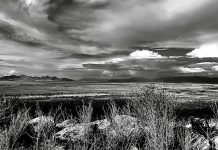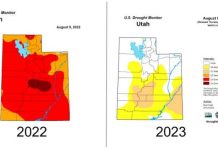
Oct. 28 (UPI) — Scientists have published a new map identifying areas of priority for the conservation of vulnerable mammals. Researchers prioritized threatened mammals with the fewest close relatives, such as Australia’s echidnas, or spiny anteaters, and Madagascar’s lemurs.
The team of ecologists analyzed the habitats of thousands of vulnerable and threatened mammal species to find areas of overlap, where targeted conservation projects will benefit several species.
They published the results of their mapping effort this week in the journal Proceedings of the Royal Society B.
“Scientists have often focused on the number of species in a protected area, but studies like this one consider the degree to which the family tree of life is well represented,” Dan Rosauer, biologist at Australia National University, said in a news release. “This study seeks to protect all land mammals, but it gives top priority to species with no close relatives, because if they were lost there would be nothing like them left.”
With increasing habitat loss and mammal populations on decline, mass extinction has become a real threat in the face of climate change. As a result, ecologists, biologists and conservationists have begun to consider how to prioritize the needs of endangered species. Some argue conservation efforts should prioritize those isolated on the evolutionary tree.
“This is the first time that anyone has mapped these priority areas for conserving the diversity of mammal evolution along with minimum target areas for habitat protection,” Rosauer said. “People are already working on these challenges, but by using this cutting-edge genetic information we can make far better decisions, protecting up to 32 percent more of the diversity of the mammal tree of life through better use of limited resources.”
Of course, researchers don’t want to leave behind vulnerable animals. By also prioritizing habitats rich in biodiversity, conservationists can ensure they help a variety of species.
“By targeting areas with these really unique species, you would also protect a lot of other species too,” Rosauer said.





